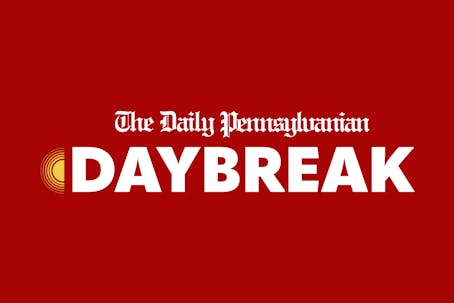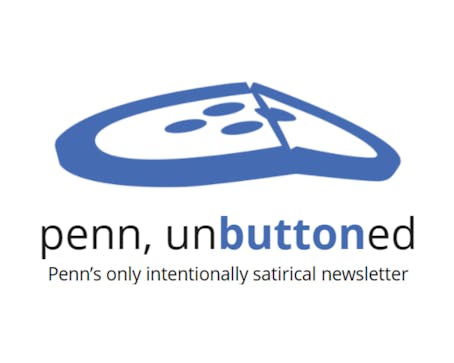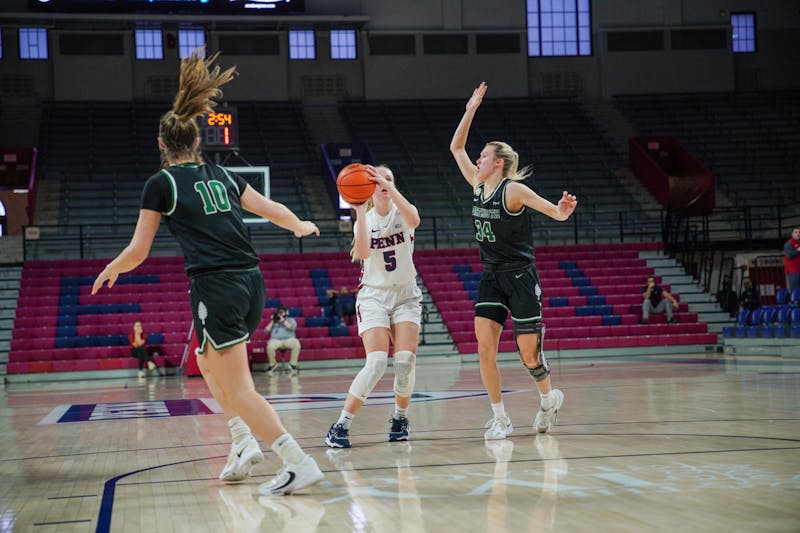
The Kislak Center for Special Collections, Rare Books and Manuscripts currently features the "Revolution at Penn?" exhibit.
Credit: Siri ChallaThe Kislak Center for Special Collections, Rare Books, and Manuscripts featured an exhibit titled “Revolution at Penn?” that examined the formation of the University and the debates that divided the school through the American Revolutionary War.
Organized in preparation for the 250th anniversary of the signing of the Declaration of Independence, the exhibition is on display in the Goldstein Family Gallery on the sixth floor of Van Pelt-Dietrich Library through May 27. The exhibit features collections from the University Archives and Records Center along with the Kislak Center.
The beginning of the exhibition presents a large map of Philadelphia in 1775, a specialty of curator J. M. Duffin, according to Kislak Center curator John Pollack. On the map, viewers can see the homes of many past residents of Old City — and further information on them, such as occupation — as well as Penn’s original campus on the southwest corner of Fourth and Arch streets.
The exhibit explained the founding of the University, its founders — including Ben Franklin — and its unprecedented status as a colonial school with no theological school. In 1765, the University Board of Trustees founded the first medical school in America.
Original documents — including the “Additional Charter of the College” that established the legal foundation of the University, books on education by Ben Franklin and other American elites, students’ notes, sermons from the first provost, William Smith, and satirical books written by students mocking their professors — were organized by the Kislak Center and the University Archives.
“Part of the argument of the show is that our school and the people in it and the people around it were central players in the revolutionary events on both sides,” Pollack said.
Smith was forced out of his position in 1779 due to his Loyalist tendencies, including giving tours to Hessian officers, and was accused of warning Hessians of an impending attack by George Washington’s forces on Germantown. The University was targeted by Constitutionalists and dissolved that year.
A new school called University of the State of Pennsylvania was established and governed directly by the state of Pennsylvania. The College of Philadelphia, still operated by Smith, was eventually merged into the University of the State of Pennsylvania to become the University of Pennsylvania.
“It also did some things that we might find very uncomfortable,” Pollack said. “People in Pennsylvania and at the school had to swear a loyalty oath to the state. … If you [didn’t] swear that oath, you [couldn't] be a teacher here.”
The exhibition explores a specific scandal during a graduation speech in which Penn student Francis Murray expressed sympathy toward John André, a Patriot traitor and Benedict Arnold’s ally. While Pollack added that André wasn’t believed to be pro-British, it was “politically dicey” at the time, and the provost took Murray’s diploma. While he did eventually get his diploma back, Murray had to defend himself in the newspapers.
“There are some parallels to protests in our own times,” Pollack said in reference to the incident with Murray. “What are students allowed to say publicly? Who gets to control that? Should your teachers lock down what you say?”
The Daily Pennsylvanian is an independent, student-run newspaper. Please consider making a donation to support the coverage that shapes the University. Your generosity ensures a future of strong journalism at Penn.
Donate









